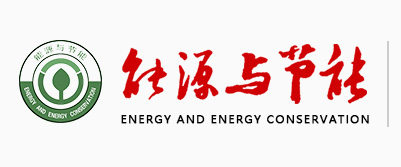202311
西部高寒地区太阳能-地源热泵联合供热系统分析
苗壮1,2,鲍玲玲1,2,李建伟1,张永欢1,牛国庆1,罗景辉1
(1.河北工程大学能源与环境工程学院,河北 邯郸 056038;2.河北省暖通空调技术创新中心,河北 邯郸 056038)
摘要: 为研究太阳能-地源热泵联合供热系统在西部高寒地区应用的可行性, 以榆林市一典型农村住宅为例, 利用
TRNSYS (Transient System Simulation Program, 瞬时系统模拟程序) 软件对联合供热系统进行模拟研究。研究结果表明:
PV/T-GSHP (Photovoltaic/Thermal-Ground Source Heat Pump, 光伏/光热-地源热泵) 联合供热系统、ST-GSHP (Solar
Thermal-Ground Source Heat Pump, 太阳热能-地源热泵) 联合供热系统在第20 年末的土壤温度相比初始温度分别仅升高
1.51 ℃, 1.89 ℃, 传统GSHP (Ground Source Heat Pump, 地源热泵) 供热系统则降低了3.09 ℃, 年平均系统性能系数分
别为4.39, 4.62 和3.03; ST-GSHP 系统与PV/TGSHP 系统、GSHP 系统和燃煤、燃气、燃油、电热锅炉所消耗的一次能
源消耗量相比分别节约5%, 36%, 60%, 50%, 34%和49%。2 种联合供热系统在该地区均取得较好的供热效果, 但
ST-GSHP 系统供暖模式的运行性能更佳。
关键词: 光伏/光热; 地源热泵; TRNSYS; 效益分析
中图分类号: TK529;TK519 文献标志码: A 文章编号: 2095-0802-(2023)11-0053-06
Analysis of Solar-geothermal Heat Pump Joint Heating System in Western
Cold Regions
MIAO Zhuang1,2, BAO Lingling1,2, LI Jianwei1, ZHANG Yonghuan1, NIU Guoqing1, LUO Jinghui1
(1. School of Energy and Environmental Engineering, Hebei University of Engineering, Handan 056038, Hebei, China; 2. Hebei
HVAC Technology Innovation Center, Handan 056038, Hebei, China)
Abstract: In order to study the feasibility of the application of solar-geothermal heat pump joint heating system in western cold
regions, a case study of a typical rural house in Yulin was carried out. TRNSYS (Transient System Simulation Program) was used
to simulate the joint heating system. The study found that at the end of the 20th year, the soil temperature of the PV/T-GSHP
(Photovoltaic/Thermal-Ground Source Heat Pump) joint heating system and ST-GSHP (Solar Thermal-Ground Source Heat Pump)
joint heating system only increased by 0.84 ℃ and 1.29 ℃ respectively compared to the initial temperature, the traditional GSHP
(Ground Source Heat Pump) system decreased by 3.09 ℃, the annual average performance coefficient of the system were 4.39,
4.62 and 3.03 respectively; compared with the primary energy consumption of PV/T-GSHP system, GSHP system, coal burning
boilers, gas boilers, fuel boilers and electric boilers, the primary energy consumption of ST-GSHP system saved 5%,36%,60%,
50%,34% and 49% respectively. Both joint heating systems achieved good heating effects in the area, but the heating mode of the
ST-GSHP system was better.
Key words: PV/T; GSHP; TRNSYS; benefit analysis


